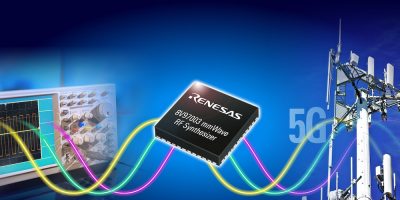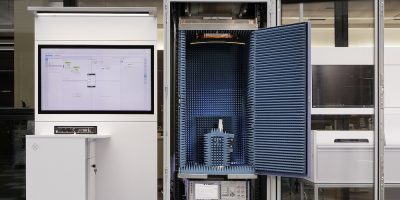The integrated 8V97003 wideband mmWave synthesiser is has the industry’s highest performance and features optimised for 5G and broadband wireless applications, says Renesas Electronics.
The 8V97003 can be used as a local oscillator (LO) for mmWave and beamforming, or a precision reference clock for a high-speed data converter in test and measurement, optical networking and data acquisition applications.
According to Bobby Matinpour, vice president of Timing Products, IoT and Infrastructure business unit at Renesas: “[The] single-chip . . . 8V97003 is particularly well-suited for emerging applications above the 6GHz carrier frequency, including broadband wireless, microwave backhaul, and 5G radios”.
The 8V97003 is claimed to deliver the industry’s best combination of wide frequency range (171.875MHz to 18GHz), low output phase noise (-60.6dBc at 20kHz to 100MHz at 6GHz) and high output power over its entire frequency range. Engineers can use a single 8V97003 in place of multiple synthesiser modules to reduce footprint and cost of the end product. The high output power eliminates the need for external driver which reduces complexity and power consumption without compromising performances, says Renesas. The low output phase noise makes it suitable for 5G and other wireless applications where it is claimed to enable superior system level signal-to-noise ratio (SNR) and error vector magnitude (EVM). As a reference clock for high-speed data converters, the 8V97003 maximises system performance by improving SNR and spurious-free-dynamic-range (SFDR).
Mass production quantities of the 8V97003 are available now in a 7.0 x 7.0mm, 48-lead VFQFPN package.







